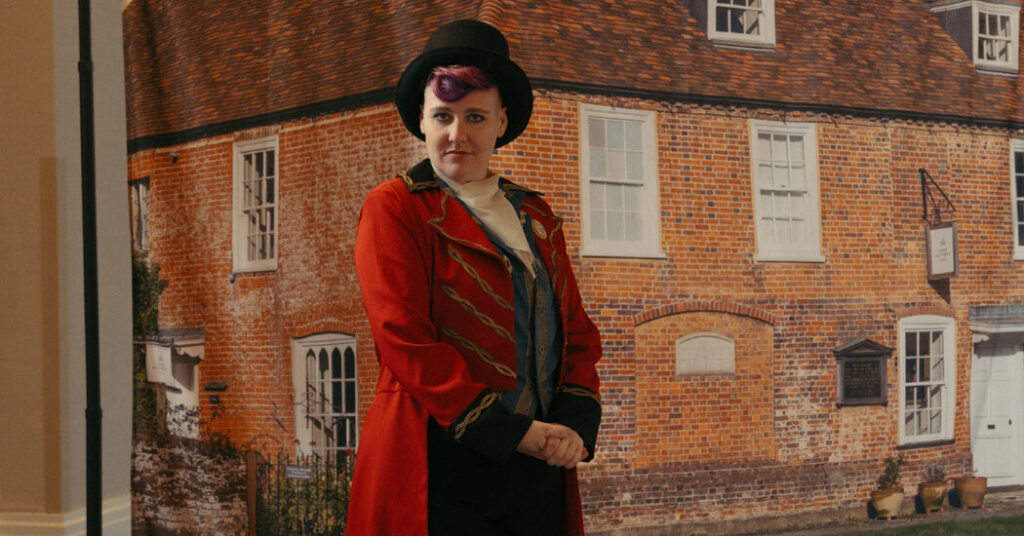If one thing connects the disparate fans of Jane Austen — the lovers of her books, the scholars of her life, the connoisseurs of the TV and movie adaptations, the people who are in it mainly for the outfits — it’s that they’re sticklers for detail.
“Woe betide the academic who doesn’t take them seriously,” said the Austen expert John Mullan, speaking of members of the Jane Austen Society U.K. and the Jane Austen Society of North America, or JASNA, the world’s two main clearinghouses for rigorous Austen-o-philia.
At JASNA’s annual conference in October, Mullan, a professor of English literature at University College London and the author of “What Matters in Jane Austen?” spoke on “The Minuteness of Genius: Jane Austen’s Choice of Words.” He made the mistake of mentioning a tiny detail in the novel “Emma.”
“I really enjoyed your talk,” an audience member told him afterward, “but by the way, it wasn’t Mr. Knightley who gave Miss Bates the leg of pork: It was Emma.”
Austen was born 250 years ago, which makes this a particularly exciting year for her admirers — not that they need an excuse to throw a party. Perhaps uniquely among the great novelists of the English language, Austen lends herself to broad-based in-person fandom. You don’t see people getting worked up like this over, say, Dickens or Twain.
Partly it’s because, as layered as her novels are, she completed just six of them: works of near-perfection written in a burst of creativity in the late 18th and early 19th centuries.
“You can be a Jane Austen expert very quickly,” said Gill Hornby, the president of the Jane Austen Society U.K. and author, most recently, of “The Elopement,” a novel based on the lives of Austen’s extended family. “To read everything that Jane Austen wrote is utterly possible.”
The books can be read on multiple levels: for their romantic plots and insights into the lives of the landed gentry in Regency England, for their revolutionary narrative techniques, for their sly humor. They reward rereading — close readers say they discover something new each time — and the universality and pliability of their plots make them ripe for cinematic adaptation.
Austen’s most ardent fans are known as Janeites, a word coined by the British writer George Saintsbury in 1894 and used by Rudyard Kipling in his 1924 short story “The Janeites,” about British soldiers reading Austen in World War I. The Jane Austen Society U.K. and JASNA were founded in 1940 and 1979, respectively, but the modern era of fandom is universally acknowledged to have begun the moment a thrillingly disheveled Colin Firth appeared in his wet shirt in the 1995 BBC adaptation of “Pride and Prejudice.”
More than 10 million people, roughly one-sixth of the U.K. population, watched the series in Britain alone, with more viewers heading to movie theaters for Emma Thompson’s “Sense and Sensibility” (1995); “Emma,” starring Gwyneth Paltrow (1996); and the “Emma” spinoff “Clueless” (1995). The ensuing period of perpetual Austen adaptation and re-adaptation has in turn piqued interest in real-life Austen sites — her home in Chawton, her grave in Winchester, her birthplace in Steventon — and a boom in Austen tourism.
In England, the Austen-themed parades, parties and exhibits marking Austen’s semiquincentennial will culminate in the Yuletide Jane Austen Birthday Ball on Dec. 13, in Bath. Tickets are sold out, but the vastness of the Austen-industrial complex means there are still plenty of ways to express your love for Jane.
You might take a Jane Austen tour, go to a Jane Austen exhibit — there’s one at the Grolier Club in New York, from Dec. 4 through Feb. 14 — or plunge into the world of wackadoodle Jane Austen spinoffs in which, for instance, her characters mix it up with zombies and sea monsters. You could attend a Jane Austen-inspired play, get a Jane Austen tattoo, learn to play cards like Jane Austen, read a scholarly paper about Jane Austen, join an online Jane Austen discussion group, take a Jane Austen class or start a Jane Austen book club (or watch the film “The Jane Austen Book Club,” for that matter).
And, of course, you might put on your gown, grab your reticule and promenade through the cobbled streets of Bath as if you yourself lived in Regency England. Though Austen did not care for the city, its handsome aspect and grand Georgian architecture have turned it into the omphalos of Austen cosplay.
The constant influx of acolytes means big money for Bath, even as some residents say they are befuddled by the fans’ commitment to verisimilitude. “They come in at lunchtime in their full dress — whole families with children, in gowns and pantaloons,” said Helen, a salesperson at a local clothing shop who declined to give her full name so as not to alienate her Austen-loving customers.
“I don’t really understand it. Bath is an old Roman town, but we don’t get floods of people dressed up as ancient Romans.”
For Janeites who aren’t up for a trans-Atlantic trek, there are options closer to home. JASNA has some 6,500 members in 83 regional branches across the United States and Canada, plus an “international region” for fans from other countries. Their meeting this year, at the Baltimore Marriott Waterfront hotel, was an especially festive occasion in honor of the writer’s 250th.
Proving that, even after a quarter millennium, there are still new things to say about Austen’s work, experts spoke on topics like “Jane Austen’s Footwear in Fact and Fiction,” “The Specter of Postfeminism in ‘Mansfield Park’” and “Jane Austen and the Ethics of Shyness.”
Janine Barchas, a professor at the University of Texas at Austin, recalled from the stage how she was once a “reluctant Janeite” who had agreed to teach an Austen class only because “I’m a good soldier, and I didn’t have tenure.” (Wouldn’t it be better to focus on an author who didn’t “have a T-shirt or ‘I heart’ underwear?” she remembered thinking.) But she became so taken by the writer, she said, that she has now written three books about Austen.
The conference also offered workshops on how to make Regency calling cards and Georgian portrait bracelets, how to tie a gentleman’s cravat and how to do something called “neckhandkerchief stamping.” For those not inclined toward crafting, there was something less fiddly: a “Northanger Abbey” escape room.
My team included two young women who had read the book; their boyfriends, who had not; and Sara Glennon, a 62-year-old English professor from Vermont who had read all of Austen’s novels at least six times. Using only our wits and granular knowledge of the novel, we had to solve a series of cryptic puzzles in less than an hour.
We trounced the other teams — suffice to say that both people whose names were variations of “Sara” performed particularly well — and were awarded, among other prizes, rubber wristbands printed with the word “Janeite.”
“Jeanette?” asked one of the boyfriends, misreading. “Is that a character in one of the books?”
While most of the JASNA attendees were wearing civilian clothing, some had gone full Austen for the weekend. Mike Mackenthun, 69, a retired U.S. Navy electronic warfare specialist, was resplendent in his waistcoat, breeches, green jacket and cunningly tied cravat. His outfit had been put together by his wife, Tamara, who left her Navy career to help run the couple’s vineyard in Idaho — and to make elaborate, handcrafted Regency bonnets that they were selling for $350 to $400.
Mackenthun was dressed as Mr. Gardiner from “Pride and Prejudice,” one of Austen’s few truly amiable husbands. Though his wife has read the books numerous times, Mackenthun said, he himself has merely watched some of the movies and thus was not strictly familiar with the finer points of his character. “I don’t understand all the interplay,” he said.
That’s OK. Readers, academics, moviegoers, bonnet lovers, semi-bewildered spouses — they’re all welcome, said Mary Mintz, JASNA’s president.
“We don’t care how people arrive at Jane Austen,” she said. “If they start with the films and TV shows, and never move onto the books, that’s fine. Of course, if they want more, we say: ‘Go for the original.’”
Sarah Lyall is a writer at large for The Times, writing news, features and analysis across a wide range of sections.
The post Everyone Is Invited to Jane Austen’s Birthday Party appeared first on New York Times.




